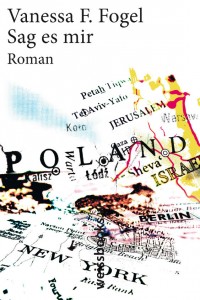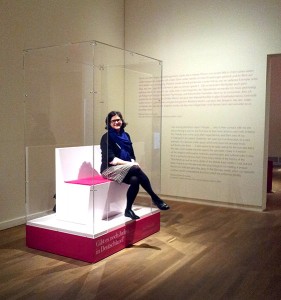or “Being who I am”
“The night before I fly to Germany to see my grandfather Mosha, I meet someone, take him home with me, and for the first time in my life, I sleep with a man.”

© weissbooks.w
Frankfurt am Main
This sentence begins the first chapter of the 2010 novel Sag es mir (Tell it to me) by Vanessa F. Fogel. The author was born in 1981 in Frankfurt and grew up in Israel. She introduces the first-person narrator of this autobiographical novel both as a granddaughter and as a confident young woman right from the start. And despite her imminent trip to the sites of extermination – she meets her grandfather in Berlin and they travel together to Poland – her emphasis is on vitality and the joys of living.
The Frankfurt publishing house weissbooks has now taken on another Jewish writer of “the third generation.” Channah Trzebiner is a lawyer, also born in 1981 in Frankfurt, where, unlike Fogel, she still lives. She has written Die Enkelin (The Granddaughter), which is more of “a kind of inner monologue” than a novel. This book also begins confidently: “I accept the woman that I am.” At once, however, the author alerts her reader to the difficult process underlying this claim:
“For years I cut off my connection to the innermost ‘I’ […], so that I could be the substitute for a life ended by murder. How I could have done otherwise? I’m called Channah after my grandmother’s youngest sister […].”
→ continue reading
My Two Hours as a Living Exhibition Object in the Show “The Whole Truth“
This was a truly extraordinary experience. The best moments were when the visitors started talking not just to me but to each other, and we wound up talking about Wagner and the weather rather than ‘just’ about growing up Jewish – or, more specifically, in my case as the daughter of a Jewish-American mother and a German, (formerly) Protestant father – in Germany and how odd it was to be sitting in a glass showcase in an exhibition.

Signe Rossbach in the exhibition “The Whole Truth”, April 8, 2013
© Jewish Museum Berlin, photo: Michal Friedlander
I was reminded of the moment in 1998 when I returned to Germany from the U.S. (although I did not want to see it that way at the time). The German publisher I was working for in New York had just been appointed State Minister of Culture by Gerhard Schröder, and I continued working for him in the Federal Chancellery, first in Bonn, then in Berlin. Back in New York, an editor at Henry Holt said to me: “Well, well, isn’t that a great job for a good little Jewish girl, working in the German government?” I thought about it, and said: “Exactly.”
So, I guess this was what brought me to sit in a glass showcase in a show at the Jewish Museum Berlin, where I have been working for twelve years now, on a seemingly quiet Monday afternoon. In my two hours of being a living exhibition object, I … → continue reading

